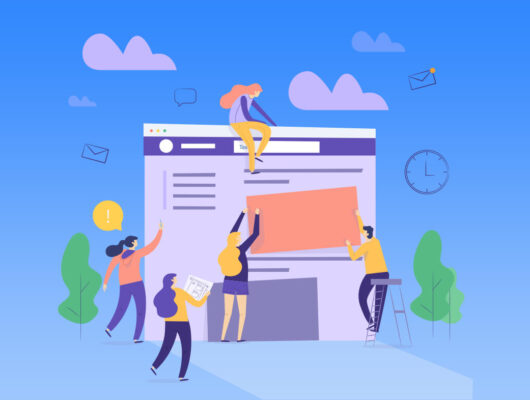Define your target audience.
Defining your target audience is a crucial step in creating effective Facebook ads. It involves understanding the characteristics, behaviors, and preferences of the people who are most likely to be interested in your product or service.
Demographics:
Start by identifying the basic demographic information of your ideal customers, such as age, gender, location, and language. This helps you narrow down your targeting options and reach a specific group of people.
Interests and Hobbies:
Explore the interests, hobbies, and activities that your target audience engages in. Facebook provides a wide range of interest-based targeting options, allowing you to reach people who have expressed an interest in specific topics, pages, or events related to your industry.
Behaviors and Purchase Intent:
Consider the behaviors and online activities of your target audience. Facebook allows you to target users based on their online behaviors, such as previous purchases, device usage, travel patterns, and more. This helps you reach people who are more likely to be interested in your offerings.
Psychographics:
Psychographic factors focus on the attitudes, values, beliefs, and lifestyle choices of your audience. Consider their motivations, aspirations, challenges, and pain points. Understanding their psychographic profile helps you create ads that resonate with their desires and needs.
Existing Customers:
Analyze your current customer base to identify common traits and characteristics. Look for patterns in their demographics, interests, behaviors, and purchase history. This data can guide you in finding similar audiences to target through Facebook ads.
Competitor Analysis:
Study your competitors’ target audience. Analyze their messaging, content, and the types of people they are appealing to. Identify any gaps or opportunities within the market that you can leverage to reach a specific segment of the audience.
Customer Surveys and Feedback:
Conduct surveys, interviews, or gather feedback from your existing customers or website visitors. This primary research can provide valuable insights into their preferences, needs, and pain points. Use this information to refine your target audience profile.

Create compelling ad content.
Creating compelling ad content is essential to capture the attention of your target audience and persuade them to take action.
Clear Value Proposition:
Clearly communicate the unique value your product or service offers. Highlight what sets you apart from competitors and explain how your offering can solve a problem or fulfill a need. Focus on the benefits and outcomes that customers can expect.
Concise and Persuasive Copy:
Keep your ad copy concise and impactful. Use short sentences or bullet points to convey key messages. Make your copy easy to skim and understand quickly. Use persuasive language that appeals to your audience’s emotions, desires, or pain points.
Compelling Headline:
Grab attention with an attention-grabbing headline that piques curiosity or addresses a specific pain point. A strong headline can make users stop scrolling and pay attention to your ad. Experiment with different headline variations to see which ones resonate best with your audience.
Engaging Visuals:
Use high-quality images or videos that capture attention and align with your brand’s visual identity. Choose visuals that evoke emotions or showcase the benefits of your product. Make sure your visuals are relevant to your target audience and grab their attention as they scroll through their newsfeed.
Social Proof:
Incorporate social proof elements, such as customer testimonials, reviews, or ratings, to build trust and credibility. Include real-life examples of how your product or service has benefited others. Social proof can help alleviate any doubts or hesitations your audience may have.
Call-to-Action (CTA):
Clearly define the action you want users to take. Use a strong, action-oriented CTA that compels users to click, sign up, learn more, or make a purchase. Make your CTA stand out visually and position it prominently within your ad.
A/B Testing:
Experiment with different variations of your ad content to identify what resonates best with your audience. Test different headlines, visuals, ad copy, and CTAs to determine which combinations drive higher engagement and conversions. Use Facebook’s A/B testing feature to compare ad performance.
Ad Format Selection:
Explore different ad formats available on Facebook, such as carousel ads, video ads, or canvas ads. Experiment with different formats to see which ones work best for your audience and objectives. The right ad format can enhance the impact of your content.
Ad Placement:
Consider where your ads will be placed within the Facebook ecosystem. Choose between newsfeed ads, sidebar ads, or Instagram placements based on your audience’s behavior and preferences. Tailoring your ad placement can increase the visibility and relevance of your content.

Use lead generation forms
Using lead generation forms on Facebook can streamline the process of capturing user information and generating quality leads.
Facebook Lead Ads:
Facebook offers a specific ad format called “Lead Ads” that includes built-in lead generation forms. These forms are designed to make it easy for users to submit their information without leaving the Facebook platform, eliminating extra steps and reducing friction.
Pre-Filled Form Fields:
One of the advantages of Facebook lead generation forms is that they can auto-populate user information, such as name and email address, based on the data users have already shared with Facebook. This reduces the effort required for users to complete the form, leading to higher conversion rates.
Customize Form Fields:
Tailor the form fields to collect the specific information you need from your leads. Consider the minimum amount of information required to initiate contact while avoiding excessive fields that might deter users from completing the form. Common fields include name, email address, phone number, and any other relevant details.
Additional Questions:
Besides the basic contact information, you can add custom questions to gain more insights into your leads. These questions can help you understand their needs, preferences, or any specific details relevant to your product or service. However, be mindful not to overwhelm users with too many questions.
Privacy and Data Security:
Clearly communicate how you will handle and protect the information collected through the lead generation forms. Assure users that their data will be used in accordance with privacy regulations and that their information will not be shared or sold to third parties without their consent.
Thank You Message and Follow-up:
After users submit the form, it’s essential to display a thank you message that acknowledges their action and sets expectations for the next steps. Promptly follow up with the leads through an automated email sequence or a CRM system to nurture them and guide them further through the conversion funnel.
Integration and Lead Delivery:
Set up a system to receive and manage the leads collected through Facebook lead generation forms. Facebook provides integration options with various CRM platforms, email marketing tools, or you can download the leads directly from the Facebook Ads Manager. Ensure a smooth process to promptly receive and follow up with the leads.
Testing and Optimization:
Test different variations of your lead generation forms to optimize their performance. Experiment with different form layouts, form lengths, or custom questions to see which combinations generate the best results. Monitor metrics like conversion rate, cost per lead, and lead quality to make data-driven improvements.

Offer something of value
Offering something of value is a powerful strategy to incentivize users to provide their contact information and generate quality leads.
Relevance:
Ensure that the incentive you offer aligns with your target audience’s interests, needs, and desires. It should be something that resonates with them and provides a solution to a problem or fulfills a desire. Tailor the value proposition to your specific audience segment.
Valuable Content:
Create high-quality content that delivers meaningful and actionable insights. It could be an ebook, guide, whitepaper, checklist, template, or any other resource that educates, informs, or helps your audience achieve their goals. Focus on providing valuable information that they cannot easily find elsewhere.
Exclusive Access:
Offer exclusive access to premium content or resources that are not freely available. This could include access to a private community or membership area, early access to new features or products, or exclusive discounts or promotions. The sense of exclusivity can make your offer more enticing.
Webinars or Online Events:
Host webinars, workshops, or online events where you provide valuable insights, expert advice, or industry trends. Offer registration for these events as an incentive to capture leads. This allows you to engage with your audience directly, showcase your expertise, and build credibility.
Free Trials or Samples:
If applicable to your product or service, offer free trials or samples to let potential customers experience the value firsthand. This can help overcome any hesitation or uncertainty and encourage users to provide their contact information to get started.
Quizzes or Assessments:
Create interactive quizzes or assessments that provide personalized insights or recommendations based on the user’s responses. People are often intrigued by the opportunity to gain self-knowledge or learn something new about themselves, making quizzes an engaging and valuable offer.
Demonstrations or Consultations:
If your product or service requires a more in-depth understanding, offer free demonstrations or consultations to showcase its benefits. This allows you to connect with potential customers directly, address their specific needs, and demonstrate how your offering can solve their problems.
Content Upgrades:
Enhance the value of your existing content by offering complementary resources or additional in-depth information. For example, you can provide a downloadable PDF version of a blog post, a comprehensive checklist, or a bonus chapter of an ebook. Content upgrades encourage users to exchange their contact information for the extra value.
Customized Recommendations:
Offer personalized recommendations or solutions based on the user’s specific needs or preferences. This could be in the form of a personalized report, tailored product recommendations, or a customized plan to achieve their goals. Tailor the recommendations based on the information users provide in the lead generation form.
Continuous Value:
Ensure that the value you offer extends beyond the initial exchange of contact information. Nurture your leads with ongoing valuable content, such as newsletters, email campaigns, or access to a resource library. By consistently delivering value, you can build trust, maintain engagement, and increase the likelihood of conversions.

Set up landing pages
Setting up landing pages is an important aspect of your Facebook ad strategy to maximize conversions and generate quality leads.
Single Goal:
Each landing page should have a clear and specific goal, such as capturing leads, promoting a product, or driving event registrations. Avoid cluttering the page with multiple offers or distractions that could dilute the main objective.
Consistent Messaging:
Maintain consistency between your Facebook ad and the landing page. The headline, imagery, and overall messaging should align with the ad that drove users to the landing page. This creates a seamless user experience and reinforces the value proposition.
Clear and Compelling Headline:
Grab users’ attention immediately with a clear and compelling headline. Clearly communicate the benefit or value your offer provides. Use persuasive language that resonates with your target audience and encourages them to continue reading or taking action.
Engaging Content:
Use persuasive and concise copy to convey the benefits, features, and unique selling points of your offer. Focus on the value it provides and how it solves a problem or fulfills a need. Use bullet points, subheadings, and visual elements to make the content easily scannable.
Call-to-Action (CTA):
Position a prominent and visually appealing CTA that stands out on the page. Make it clear and compelling, specifying the desired action you want visitors to take. Use action-oriented language to encourage them to click, sign up, purchase, or engage further.
Form Optimization:
If your landing page includes a lead capture form, keep it simple and user-friendly. Only ask for essential information that you need to initiate contact. The fewer form fields, the higher the likelihood of users completing the form. Consider using form validation to ensure accurate data entry.
Visual Elements:
Incorporate high-quality and relevant images, videos, or graphics to enhance the visual appeal of your landing page. Visual elements should support the overall message and create a positive impression. Avoid using too many distracting elements that may divert users’ attention.
Trust and Social Proof:
Include trust signals and social proof elements to build credibility and trust. This can include customer testimonials, reviews, case studies, awards, security badges, or logos of well-known brands you’ve worked with. These elements help alleviate any concerns or doubts visitors may have.
Mobile Optimization:
Ensure your landing page is fully optimized for mobile devices. With the increasing use of smartphones, many users will access your landing page from mobile devices. It should be responsive, load quickly, and provide a seamless experience across different screen sizes.
Testing and Optimization:
Continuously test and optimize your landing pages to improve their performance. A/B test different variations of headlines, copy, CTA placement, form fields, or overall design. Monitor metrics like conversion rate, bounce rate, and time on page to identify areas for improvement.
Thank You Page:
After visitors submit a form or take the desired action, redirect them to a thank you page. Use this page to express gratitude, confirm their action, and provide additional information or next steps. It’s an opportunity to continue engaging and nurturing leads.

Use retargeting
Retargeting, also known as remarketing, is a powerful strategy to re-engage with users who have previously interacted with your brand or website.
Install Tracking Pixel:
Install a tracking pixel or code snippet on your website to collect data on user behavior. Platforms like Facebook provide pixel integration options. This pixel tracks users who visit your website and captures information about their interactions, such as pages viewed or products searched.
Audience Segmentation:
Segment your website visitors into different audience groups based on their behavior and level of engagement. For example, you can create segments for users who abandoned a shopping cart, users who visited specific product pages, or users who engaged with certain content. This segmentation allows you to deliver more personalized and relevant ads.
Define Ad Campaign Objectives:
Determine the goals of your retargeting campaigns. It could be to drive conversions, increase brand awareness, or encourage users to re-engage with your content. Clarifying your objectives helps in designing effective ad content and selecting appropriate ad formats.
Create Compelling Ad Content:
Develop ad content that resonates with your retargeting audience. Highlight the benefits of your offerings, address any objections or concerns they might have, and provide incentives or offers to encourage them to take action. Customize your messaging based on their previous interactions or the stage of the customer journey they are in.
Dynamic Product Ads:
If you have an e-commerce store or a catalog of products, consider using dynamic product ads. These ads automatically showcase products that users have previously viewed or added to their shopping cart. Dynamic ads create a personalized and relevant experience, reminding users of the specific products they showed interest in.
Frequency and Ad Fatigue:
Be mindful of ad frequency and avoid overwhelming users with too many retargeting ads. A high ad frequency can lead to ad fatigue and annoyance. Set frequency caps to control the number of times an ad is shown to an individual within a given time period.
Exclusion Lists:
Use exclusion lists to avoid targeting users who have already converted or taken the desired action. This ensures that you allocate your ad budget efficiently and focus on users who are more likely to benefit from your retargeting efforts.
Ad Placement:
Consider where your retargeting ads will be displayed. You can choose to display ads on Facebook, Instagram, or across the Facebook Audience Network. Test different ad placements to see which ones perform best for your retargeting campaigns.
Sequential Messaging:
Implement sequential messaging to guide users through the customer journey. Rather than showing the same ad repeatedly, create a sequence of ads that gradually move users towards the desired action. For example, start with an introductory ad, followed by ads that highlight specific benefits or offer additional incentives.
Monitor and Optimize:
Regularly monitor the performance of your retargeting campaigns. Analyze key metrics such as click-through rate (CTR), conversion rate, cost per acquisition (CPA), and return on ad spend (ROAS). Identify areas for improvement and make data-driven optimizations to maximize the effectiveness of your retargeting efforts.

Monitor and optimize
Monitoring and optimizing your Facebook ad campaigns are crucial steps to ensure their effectiveness and maximize your return on investment.
Key Performance Indicators (KPIs):
Define the KPIs that align with your campaign objectives. Common KPIs include click-through rate (CTR), conversion rate, cost per conversion, return on ad spend (ROAS), and overall campaign ROI. Establishing clear benchmarks allows you to measure the success of your campaigns and identify areas for improvement.
Ad Performance Analysis:
Regularly analyze the performance of your ads at the ad set and ad level. Pay attention to metrics such as CTR, engagement rate, relevance score, and conversion rates. Identify top-performing ads and those underperforming, and use this data to inform your optimization strategies.
A/B Testing:
Conduct A/B tests to compare different ad variations, targeting options, or ad placements. Test one variable at a time to identify what elements are driving better performance. This could include testing different headlines, images, ad copy, call-to-action buttons, or targeting parameters. Use the insights gained from A/B tests to optimize your campaigns.
Budget Allocation:
Monitor your budget allocation and assess how it is performing across different campaigns and ad sets. Adjust your budget based on the performance of each campaign. Increase budgets for high-performing campaigns and reallocate or decrease budgets for campaigns that are underperforming.
Audience Insights:
Continuously analyze the data and insights provided by Facebook Ads Manager to understand your audience better. Identify trends, demographics, interests, or behaviors that are most likely to result in conversions. Use these insights to refine your targeting strategy and optimize your campaigns for better results.
Ad Scheduling:
Assess the performance of your ads at different times of the day and days of the week. Adjust your ad scheduling to focus on periods when your target audience is most active or responsive. By optimizing the timing of your ads, you can increase the likelihood of engagement and conversions.
Ad Placement Optimization:
Review the performance of your ads across different placements, such as Facebook news feed, Instagram, Audience Network, or Messenger. Identify which placements are delivering the best results and allocate your budget accordingly. You may find that certain placements perform better for specific campaigns or audience segments.
Campaign Optimization Tools:
Utilize the optimization tools and features provided by Facebook Ads Manager. These may include automatic bidding, campaign budget optimization, or audience optimization. Experiment with these tools to determine which ones work best for your campaigns and help achieve your desired outcomes.
Ad Copy and Creative Refresh:
Avoid ad fatigue by regularly refreshing your ad copy and creative assets. Over time, users may become less responsive to the same ad content. Test new variations of ad copy, images, or videos to keep your campaigns fresh and maintain user engagement.
Conversion Tracking and Attribution:
Ensure that conversion tracking is properly set up and that you’re accurately attributing conversions to your Facebook ads. Use the appropriate attribution model to assess the impact of your ads at different stages of the customer journey. This helps you understand the true value and impact of your campaigns on lead generation and conversions.
Continuous Learning and Iteration:
Treat campaign optimization as an iterative process. Learn from the data, insights, and feedback you gather from your campaigns. Continuously refine your strategies, make data-driven decisions, and implement optimizations based on the lessons learned from previous campaigns.

Follow up promptly
Following up promptly with your leads is essential to maintain engagement, build trust, and increase the likelihood of conversions.
Automation and Lead Management:
Utilize automation tools and CRM systems to efficiently manage and track your leads. Set up automated email responders or notifications that alert you when a new lead is generated. This ensures that no leads slip through the cracks and enables you to respond promptly.
Personalization:
Customize your follow-up communication to each lead. Address them by name and reference specific actions or interactions they had with your brand. Personalization shows that you value their engagement and helps establish a connection from the start.
Timely Response:
Aim to respond to leads as quickly as possible, ideally within a few hours or less. A prompt response demonstrates your professionalism and eagerness to assist. It also prevents potential leads from losing interest or seeking alternatives while waiting for a response.
Multiple Communication Channels:
Consider reaching out to leads through multiple communication channels, such as email, phone calls, or instant messaging. Some individuals may prefer certain channels over others, so offering options increases the chances of connecting with them promptly.
Clear and Relevant Messaging:
Craft clear and relevant messages that address the lead’s specific needs, interests, or concerns. Reference the information they provided in the lead generation form or their previous interactions with your brand. Tailor your message to demonstrate that you understand their requirements and can provide value.
Provide Value:
Offer additional information, resources, or assistance that aligns with the lead’s interests. This can include relevant blog articles, guides, case studies, or personalized recommendations. By providing value upfront, you establish credibility and demonstrate your expertise in addressing their needs.
Nurture Leads:
Develop a lead nurturing strategy to stay engaged with leads over time. Send periodic follow-up emails, newsletters, or relevant content that keeps them informed and interested in your brand. Gradually build a relationship and continue providing value to move leads closer to conversion.
Track and Monitor:
Keep track of your follow-up efforts and monitor their effectiveness. Analyze metrics such as email open rates, click-through rates, and response rates. This allows you to identify patterns, refine your approach, and optimize your follow-up strategy for better results.
Continual Communication:
Maintain consistent communication with leads throughout their customer journey. Address their questions, provide updates on offers or promotions, and offer support when needed. Regular communication keeps your brand top of mind and helps nurture leads until they are ready to make a purchase decision.
Measure Conversions:
Measure the conversion rates of your leads at various stages of the follow-up process. This helps you understand the effectiveness of your follow-up efforts and identify any bottlenecks or areas for improvement. By tracking conversions, you can refine your strategies and focus on the most effective follow-up tactics.




